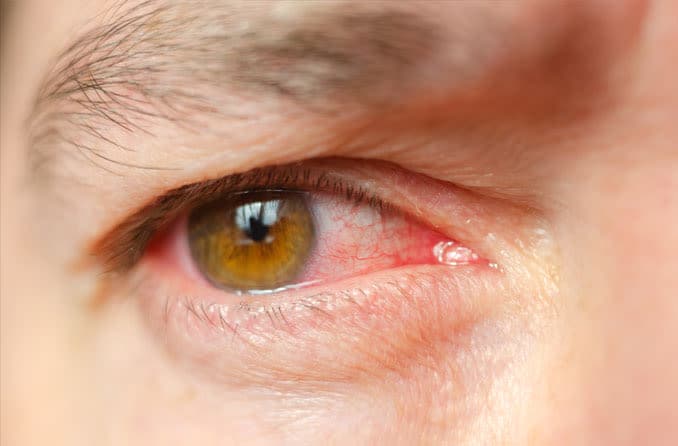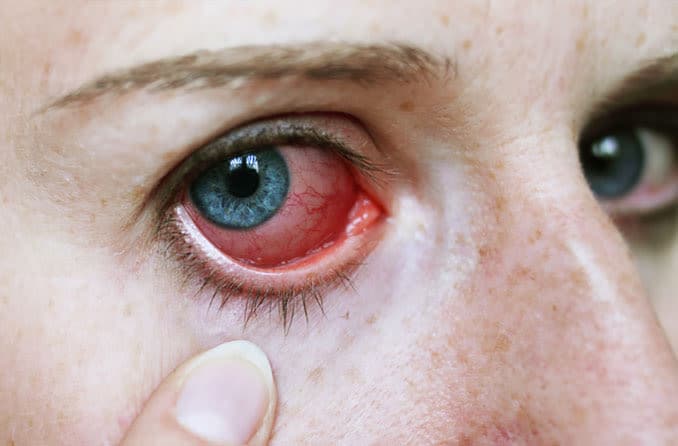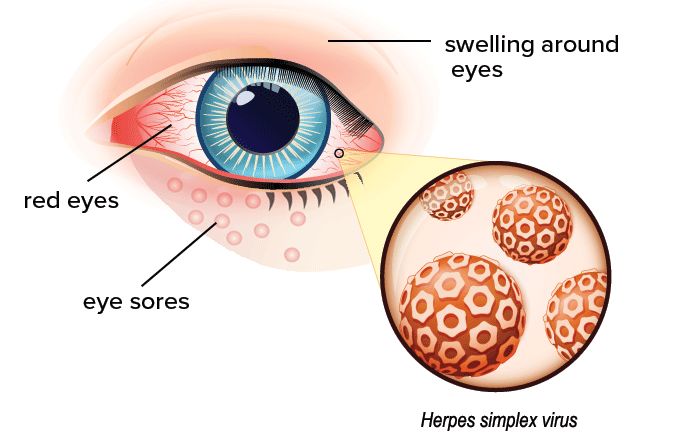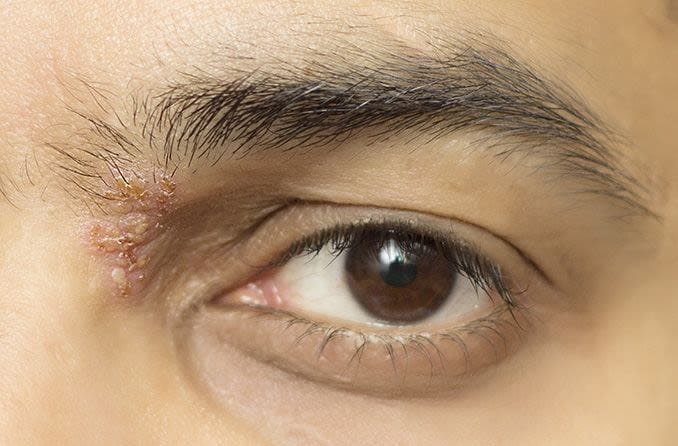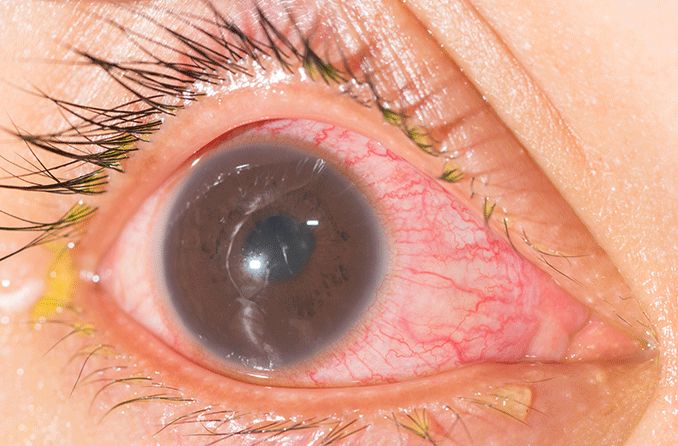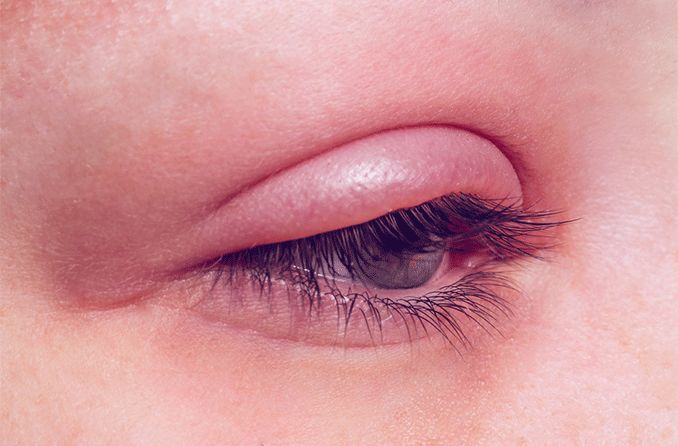What is an eye infection?
Most common eye infections, such as pink eye (conjunctivitis), affect the outer surface layers of the eyes and resolve within a few weeks. Symptoms typically include redness, swelling, discomfort or discharge. Internal or corneal eye infections, however, can cause vision loss and require urgent medical treatment.
What causes eye infections?
An eye infection is caused by microorganisms, such as viruses, bacteria or fungi, that spread to the tissues of one or both eyes. Viral infections can spread easily through contact with surfaces and respiratory droplets. Bacterial infections can result from contact as well. For example, unclean contact lenses or makeup harbor bacteria and can transfer them to the eyes.
The body responds to infection and injuries with the process of inflammation, which helps tissues heal. The tears help protect the eyes by washing away irritants and germs. However, when the eyes become severely dry, sustain an injury or have weakened defenses, infection becomes more likely.
Surface eye infections
Most eye infections usually affect the outer layers of the eye. Although these infections are common reasons for doctor visits, many resolve on their own without treatment.
Conjunctivitis
The most common type of eye infection is conjunctivitis. It occurs when the clear membrane covering the white part of the eye and lining the inner eyelids becomes irritated and inflamed. Because it makes your eye appear pink or red, it is also known as pink eye.
Most cases of conjunctivitis go away on their own within one to two weeks with home care, such as warm compresses, pain relievers and artificial tears. There are different types of conjunctivitis that can be either infectious or non-infectious. Allergic conjunctivitis or conjunctivitis caused by irritants is non-infectious. Infectious forms of conjunctivitis include:
Viral conjunctivitis
Viral conjunctivitis is highly contagious. Most cases of sudden-onset pink eye are caused by adenoviruses. These are common viruses that cause cold or flu-like symptoms. Other viruses, such as COVID-19 and herpes, can also cause the condition. Symptoms include watery discharge and itchy eyes. Antibiotic drops do not work for viral conjunctivitis.
Bacterial conjunctivitis
Bacteria are the second leading cause of pink eye. Bacterial conjunctivitis is commonly seen in schools and daycares. It spreads easily, so good hygiene and frequent handwashing are important. Symptoms include yellowish eye discharge, tearing and discomfort. Most cases clear up on their own in about 10 days. Some strains of bacteria can cause long-lasting symptoms, so antibiotics may be needed. Antibiotics have been shown to reduce symptoms more quickly by helping to eliminate the bacteria from the eye.
Fungal and parasitic conjunctivitis
Fungi or parasites can sometimes infect the eye. This is rare compared with viral or bacterial pink eye. When it happens, prompt care is critical to prevent eye-threatening complications.
Keratitis
Keratitis is inflammation of the cornea, the transparent dome-shaped tissue at the front of the eye. Keratitis can be non-infectious or infectious. Non-infectious causes include severe dry eyes or injury.
A corneal ulcer is keratitis that has progressed to an open sore. It can appear as a white spot on the cornea and is usually caused by an infection. Infectious forms of keratitis include:
Bacterial keratitis
Bacterial keratitis is an infection that can cause serious damage to the cornea if not treated promptly. Contact lens wearers are at higher risk, especially when lenses aren’t properly cleaned or are worn too long. Common symptoms include:
- Severe eye pain
- Blurry vision
- Redness
- Light sensitivity
- Discharge
Risk factors for bacterial keratitis include:
- Poor contact lens hygiene
- Weakened immune system
- Other eye conditions
- Recent eye injury
Infection-related corneal disease can develop rapidly and lead to vision loss if not treated promptly.
Viral keratitis
Herpes simplex virus type 1 (HSV-1) is the most common cause of viral keratitis. It is the same virus that causes cold sores. The cornea can become infected when the virus travels from another part of the body, such as the mouth. Herpes zoster, which causes chickenpox and can reactivate later in life as shingles, is another virus that can infect the cornea.
Stress, a weakened immune system or sunlight exposure can trigger an attack. These viruses may cause ongoing inflammation or corneal ulcers. Most cases heal without scarring, but severe infections can lead to permanent vision problems.
Fungal keratitis
Fungal eye infections are rare but require urgent medical care. Eye injuries, particularly those caused by vegetation, are the most common cause of fungal infections in the eye. They can also result from improper contact lens care and wear. Steroid eye drops can increase the risk as well. Early treatment is essential to avoid severe complications, such as a corneal ulcer or vision loss. Fungal keratitis can enter the eye and progress to fungal endophthalmitis, a medical emergency.
Acanthamoeba keratitis
Acanthamoeba are infectious, single-celled germs that live in fresh water and soil. Acanthamoeba eye infections are also rare but require urgent medical care. Most cases of this infection occur in people who do not follow contact lens care instructions. It can also occur if the lenses come into contact with contaminated water, such as while swimming.
Stye
A stye appears as a bump on the edge of the eyelid. It is caused by a bacterial infection of an eyelash hair follicle or an oil gland on the eyelid. The bumps usually occur on one lid but can also develop on both. They are not contagious and usually heal on their own within one to two weeks. To ease the pain and swelling of this eyelid infection, warm compresses are usually recommended. If a stye causes persistent pain and swelling that does not decrease, antibiotics may be needed to treat the infection.
Blepharitis
Blepharitis is a common chronic condition. It causes the edge of the eyelids to become red and swollen. It is typically caused by clogged oil glands, skin issues or mild infections. It generally affects both eyes and may cause itching, burning or crusting along the lashes. It is not contagious. Symptoms can often be managed with regular eyelid cleansing and warm compresses. Antibiotic ointments or anti-inflammatory drops may be prescribed if symptoms are severe.
Dacryocystitis
Dacryocystitis occurs when the tear drainage system becomes blocked. This blockage causes tears to build up, which can lead to an infection. This condition causes swelling, tenderness and redness near the inner corner of the eye.
It affects approximately one in every 20 newborns, but it can also occur in older children and adults. In newborns, the blockage may occur as their tear ducts haven’t fully developed and opened. In adults, it can result from injuries, growths or certain medications. Treatment usually includes antibiotics to eliminate the infection. If blockages recur, a minor surgery may be performed to create a new pathway for tears to drain properly.
Internal eye infections
While infections of the surface of the eye are much more common, microbes may penetrate beyond the outer layers into the eye’s internal structures.
Endophthalmitis
Endophthalmitis is an urgent eye condition. It occurs when bacteria or fungi penetrate the clear fluids inside the eye. Injuries, surgical procedures or infections within the body can lead to this condition. Endophthalmitis can cause vision loss and is a medical emergency. Warning signs include worsening eye pain, vision problems, redness and discharge, especially after eye surgery or trauma.
Orbital (postseptal) cellulitis
Orbital cellulitis is a serious bacterial infection affecting the tissues surrounding the eye. If not treated promptly, orbital cellulitis can lead to vision loss or life-threatening complications. It is more common in young children. It often begins when germs spread from nearby sinuses behind the nose into the eye socket. This condition can cause pain, swelling and redness from the eyebrow to the cheek. Treatment involves intravenous antibiotics in a hospital setting, followed by oral antibiotics. Fortunately, most children recover fully when therapy begins promptly.
Uveitis
Uveitis is inflammation of the eye’s middle layer, known as the uvea. This layer includes the colored part of the eye, called the iris, along with surrounding structures. It can occur on its own or as a result of other health issues, such as autoimmune diseases or infections. One or both eyes may be affected. Uveitis can cause symptoms, such as redness, pain, light sensitivity and blurred vision. Because uveitis can result from many causes, its treatment varies. However, it often includes medications that reduce pain and inflammation.
Who is most at risk for eye infections?
Certain factors can increase the risk of developing an eye infection, such as infectious keratitis or conjunctivitis. These include:
- Wearing dirty contact lenses or sleeping in contacts
- Children and the elderly (bacterial eye infections, such as conjunctivitis)
- Trauma
- History of previous ocular surgery
- Existing eyelid diseases and other ocular surface diseases
- Systemic conditions, such as diabetes
- Weakened immune system (immunocompromised)
What are the symptoms of an eye infection?
Symptoms of an eye infection depend on the underlying cause and the affected part of the eye. One eye may become infected first, and the infection can spread to the other eye. This is often the case in conjunctivitis.
Common symptoms of a surface eye infection include:
- Redness
- Discharge
- Pain/irritation
- Swelling
- Eyelids sticking together
Bacterial conjunctivitis, specifically, can cause:
- Yellow or green, sticky discharge
- Itchy eyes
- Swollen eyelids
Viral conjunctivitis, specifically, can cause:
- Watery discharge during the day and sticky discharge upon waking
- Swollen eyelids
- Glare or blurred vision due to inflammation of the cornea
Severe infections, like keratitis and endophthalmitis, are ocular emergencies. Contact a doctor immediately if you experience any of the following:
- Severe or worsening pain
- Vision loss
- Severe light sensitivity
- Signs of corneal damage
How are eye infections diagnosed?
Diagnosis of an eye infection begins with a comprehensive eye exam. Your doctor will check your vision to see if it has changed. They will use a slit lamp to examine your eyelids, eye surface and the conjunctiva inside your eyelids. They will also assess the health of the internal eye structures. They may need to take a corneal scraping sample. It is important to let them know:
- When eye symptoms started
- Whether there was recent trauma to the eye
- Whether you use steroid eye drops
- If you wear contact lenses
- Whether you have diabetes or other health conditions
How do doctors treat eye infections?
Prescription medication can improve symptoms and shorten the duration of eye infections. However, many mild cases of eye infections heal on their own, so doctors prescribe medication only when necessary.
The treatment varies depending on the cause (bacterial, viral or fungal), the location and the severity of the infection. Eye drops and ointments are typically prescribed first. Doctors may prescribe oral medication when topicals aren’t enough or if the infection spreads. For severe or emergency cases, intravenous medications and hospitalization may be needed.
If your doctor has prescribed eye drops or other medications, it is important to follow the entire treatment plan.
At-home treatments
At-home treatments can help you manage symptoms and decrease the risk of an infection worsening:
- Use cold compresses and artificial tears.
- Wear sunglasses if they provide comfort.
- Stop wearing contact lenses and eye makeup.
- Use only the eye drops or ointment prescribed by your doctor.
- Don’t touch or rub the infected eye.
Treatment for bacterial eye infections
Antibiotic eye drops and ointments are effective only for bacterial eye infections (not viral). Your doctor will choose the medication based on the type and severity of the infection. Common options include fluoroquinolone drops, like ciprofloxacin or moxifloxacin. Tobramycin and ointments, like erythromycin, are also used. These medications work best when used as prescribed by your doctor. They help kill the bacteria and reduce symptoms within the first few days of treatment.
Treatment for viral eye infections
There is currently no effective treatment for viral eye infections, such as viral conjunctivitis. Eye comfort can be improved with artificial tears, a cold compress and ibuprofen. Viral conjunctivitis won’t improve with antibiotic drops or ointment.
For herpes infections, oral antiviral medications, such as acyclovir, may be prescribed. Herpes virus conjunctivitis can be treated with these antivirals to help the infection clear up faster. Your doctor may advise you to stop any steroid eye drops you may be taking. They can worsen a herpes infection.
Herpes zoster conjunctivitis (chickenpox/shingles virus) can also be treated with antiviral medications. The treatment plan may include steroid eye drops.
Treatment for fungal eye infections
Treatment for fungal infections depends on factors, such as the type of fungus, the location and severity of the infection. Antifungal eye drops, pills or injections are typically given. Surgery might be required if these medications don’t work.
How can you prevent eye infections?
There are practical, everyday strategies to reduce the risk of eye infection. These include:
- Avoid touching and rubbing your eyes.
- Wash your hands before and after applying any eye medication.
- Schedule routine eye checkups.
- Use proper eye protection.
- Pay attention to changes in your vision.
- Eat a healthy diet to aid recovery.
- Stay away from tobacco products.
When should you see an eye doctor?
If you suspect you have an eye infection, consult an eye doctor if your symptoms do not begin to improve or worsen in a couple of days. Keratitis and endophthalmitis are emergencies that require immediate specialist evaluation.
Seek immediate emergency care if you notice:
- Vision changes – Any loss or reduction in visual acuity or blurred vision.
- Severe pain – Intense eye pain or pain that is getting worse.
- Severe symptoms – Worsening symptoms, a large amount of discharge or severe light sensitivity.
- Signs of complications – Swelling or redness around the eyes or eyelids, a headache or signs of corneal damage.
Frequently asked questions about eye infections
Can eye infections go away on their own?
Yes, many mild eye infections heal on their own. Most conjunctivitis (pink eye) cases are caused by viruses and get better on their own in one to two weeks as your body fights the infection. Bacterial pink eye usually clears up in one to two weeks, though antibiotic drops can help it heal faster.
However, serious eye infections, including corneal or internal eye infections, are medical emergencies. These require immediate treatment to prevent vision loss.
Are eye infections contagious?
It depends on what caused your eye infection. Pink eye from viruses or bacteria spreads easily to other people. If you have discharge that sticks to your eyelashes, it’s likely contagious. Eye irritation from allergies, chemicals or other irritants cannot spread to others. Stay home from work or school if you have symptoms that could spread to others. Ask your doctor when it’s safe to return.
How long does it take to recover from an eye infection?
Recovery time depends on what type of eye infection you have:
- Viral pink eye – Usually heals in one to two weeks on its own.
- Bacterial pink eye – Usually heals in one to two weeks, but antibiotic drops may make it heal faster.
- Serious infections – These can cause permanent vision problems or blindness if not treated quickly by a doctor.
Most eye infections either resolve on their own or respond very well to prompt treatment. Some eye infections are medical emergencies that need immediate care to prevent vision loss. See a doctor right away if you have severe pain, vision changes or worsening symptoms.

